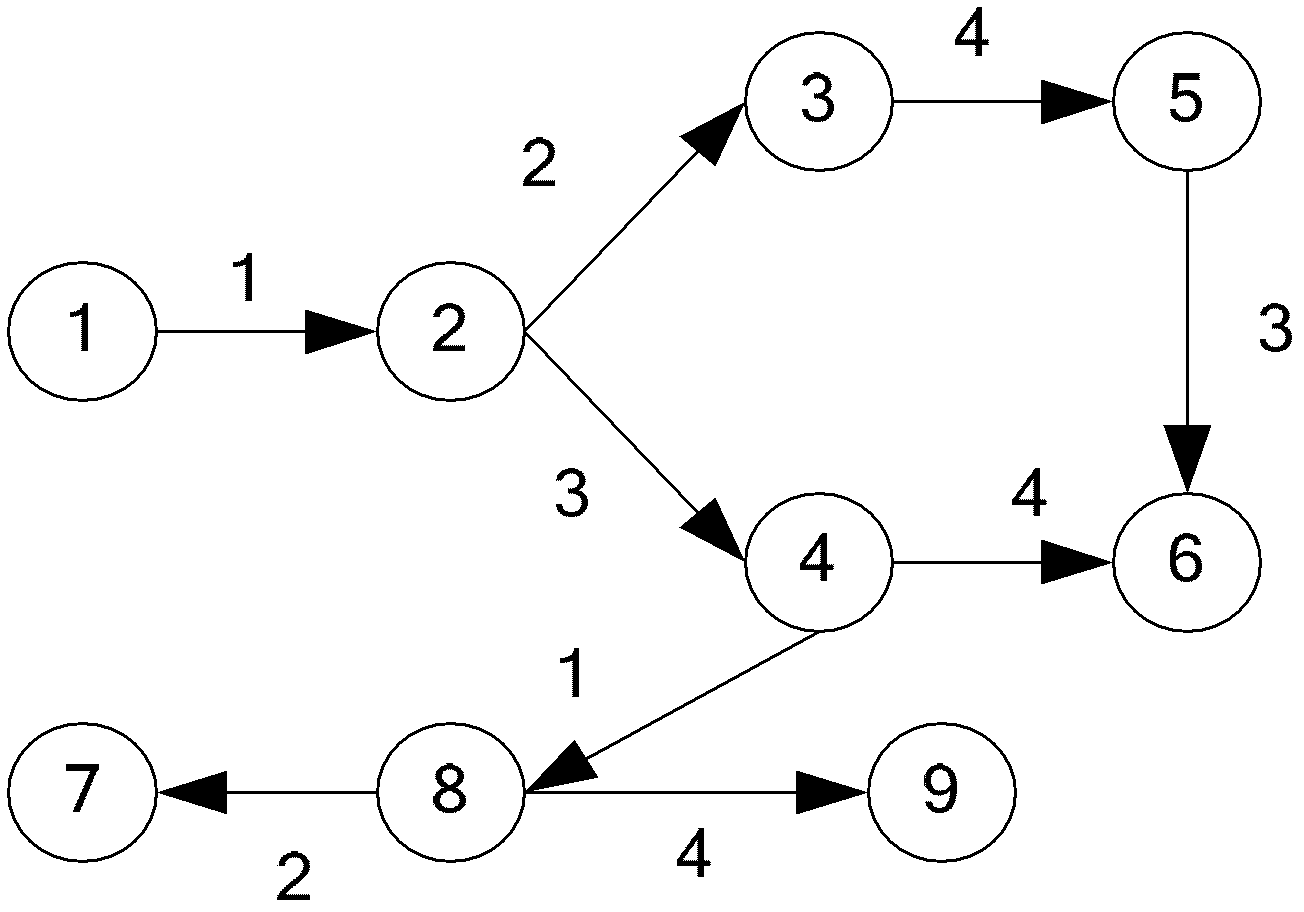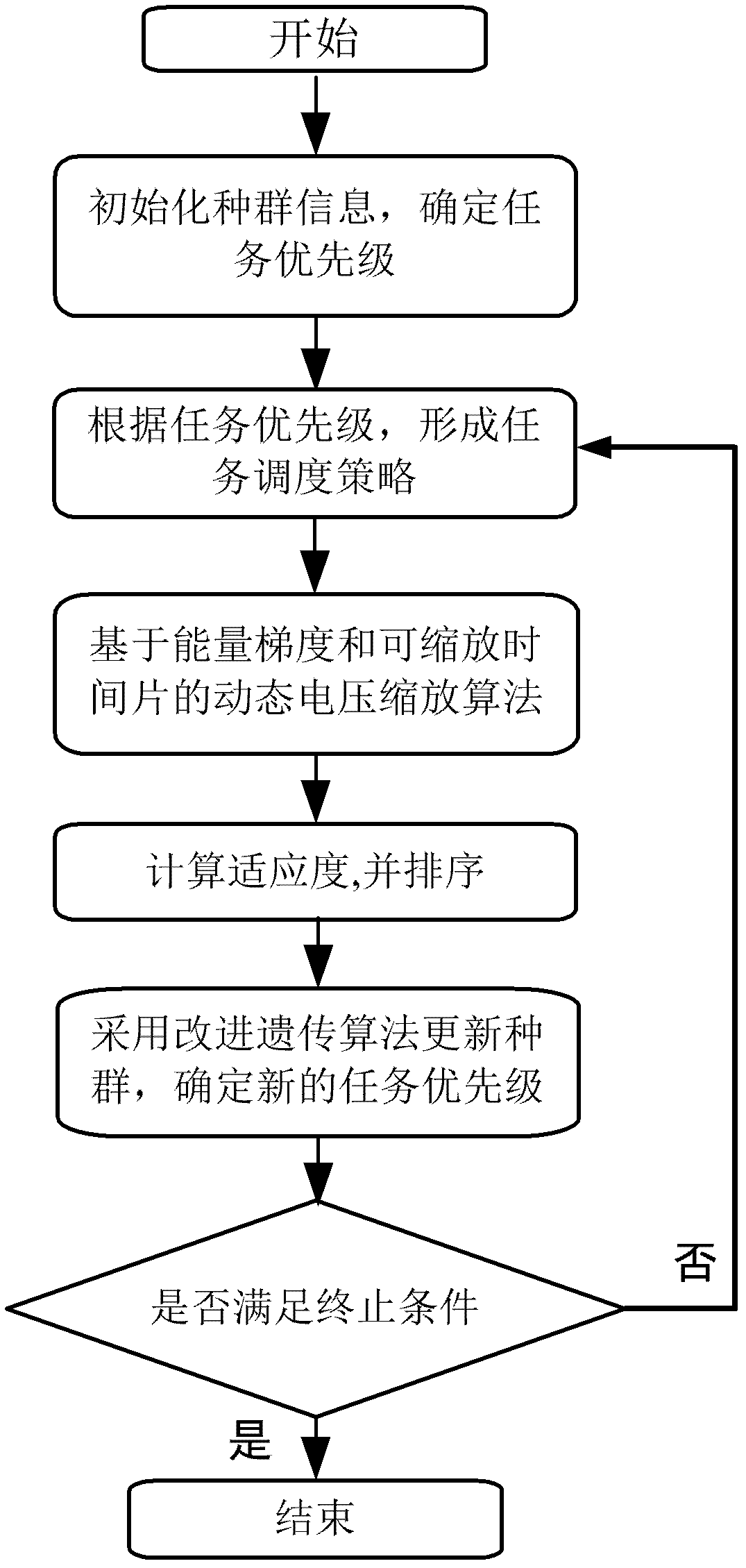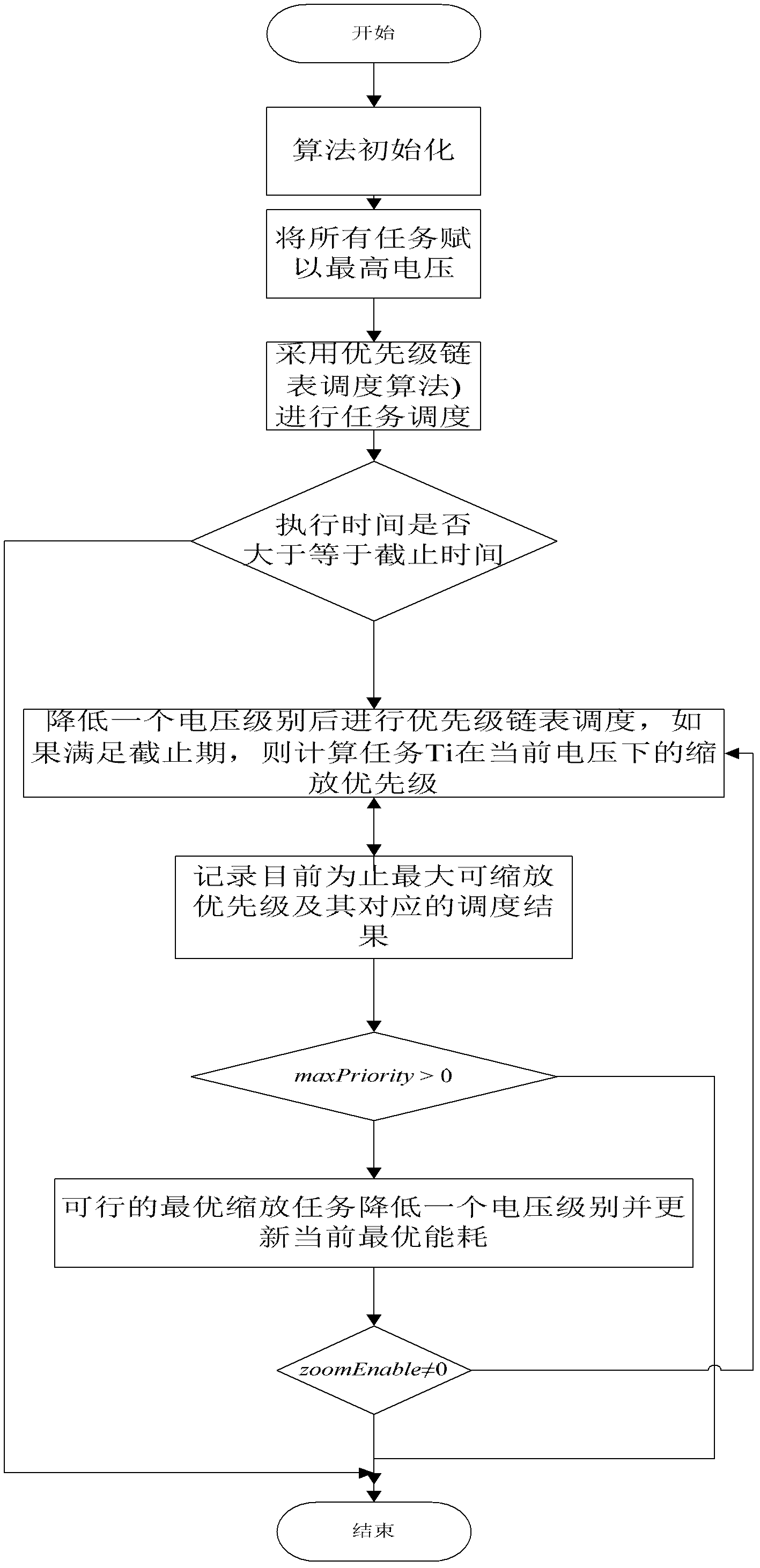Heterogeneous multi-core energy-saving task schedule method based on improved genetic algorithm
An improved genetic algorithm and task scheduling technology, applied in the field of heterogeneous multi-core energy-saving task scheduling, can solve problems such as weak local optimization function, high algorithm complexity, and difficulty in obtaining the optimal solution of the system, and achieve superior overall performance and optimization The effect of scheduling energy consumption
- Summary
- Abstract
- Description
- Claims
- Application Information
AI Technical Summary
Problems solved by technology
Method used
Image
Examples
Embodiment Construction
[0043] The present invention will be further described in detail below in conjunction with the accompanying drawings and specific embodiments.
[0044] In a heterogeneous multi-core environment, the problem of optimal scheduling of energy consumption for task graphs with forward and backward dependencies can be described as follows: assign tasks to reasonable processors, and determine the operating voltage of the processors to meet the requirements of all tasks. Under the premise of the deadline, the goal of optimizing the overall energy consumption of the system is achieved. Generally speaking, the energy-optimized scheduling strategy on heterogeneous multi-core processors can be divided into three stages, namely task division, task scheduling and dynamic voltage scaling. Task division is to allocate tasks to each processor; task scheduling determines the execution sequence of tasks based on task division; dynamic voltage scaling determines the execution voltage of tasks.
...
PUM
 Login to View More
Login to View More Abstract
Description
Claims
Application Information
 Login to View More
Login to View More - R&D
- Intellectual Property
- Life Sciences
- Materials
- Tech Scout
- Unparalleled Data Quality
- Higher Quality Content
- 60% Fewer Hallucinations
Browse by: Latest US Patents, China's latest patents, Technical Efficacy Thesaurus, Application Domain, Technology Topic, Popular Technical Reports.
© 2025 PatSnap. All rights reserved.Legal|Privacy policy|Modern Slavery Act Transparency Statement|Sitemap|About US| Contact US: help@patsnap.com



